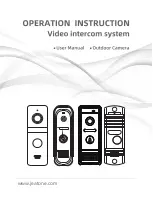
6703/6704 Calibration Procedure
2
www.natinst.com
Calibration Overview
This section defines calibration, describes why it is necessary, and explains
when you should do it. This section also covers internal and external
calibration.
What Is Calibration?
Calibration is a procedure of reading offset and gain errors from a data
acquisition (DAQ) board and updating special analog calibration circuitry
that corrects these errors. National Instruments calibrates every 6703/6704
product at the factory. During the factory-calibration procedure, the
calibration constants—values used to update the analog calibration
circuitry—are stored in nonvolatile memory on the board. From memory,
these values are loaded and used as needed.
Why Calibrate?
Offset and gain errors may drift with time and temperature. As a result, the
factory-set calibration constants may become invalid, requiring calibration
to achieve the specified accuracy of the board.
How Often Should You Calibrate?
The measurement requirements of your application indicate how often the
6703/6704 products need to be calibrated to maintain accuracy. National
Instruments recommends that you perform a complete calibration at least
once every year. This interval may be shortened to 90 days or six months
depending on the demands of your application.
Calibration Options: External Versus Internal
6703/6704 products have two different calibration options, an internal or
self-calibration, and an external calibration. Both of these calibration
modes remove error from measurements.
Internal Calibration
All 6703/6704 devices perform continuous internal calibration using
special calibration channels. These devices each have 16 voltage outputs
and two voltage calibration channels. The 6704 also has 16 current outputs
and two current calibration channels. All the output and calibration
channels get scanned and refreshed together. The outputs of the calibration
channels for the 6703 and 6704 are continuously compared to the onboard
reference, and the 16-bit DAC’s offset and gain are adjusted to minimize
the errors of the calibration channels. Since the 6703 and 6704 have
excellent channel-to-channel matching of offset and gain errors,



































